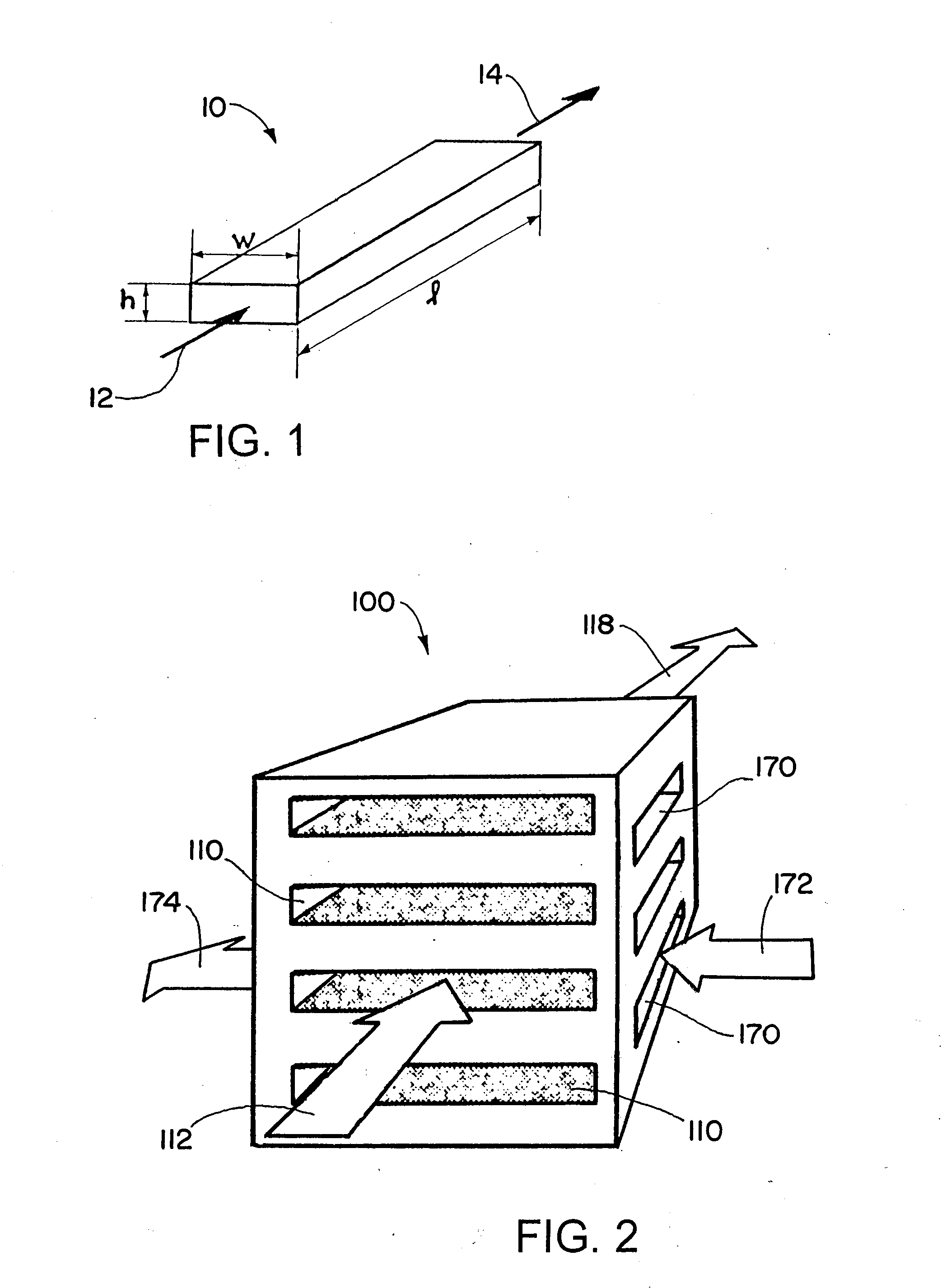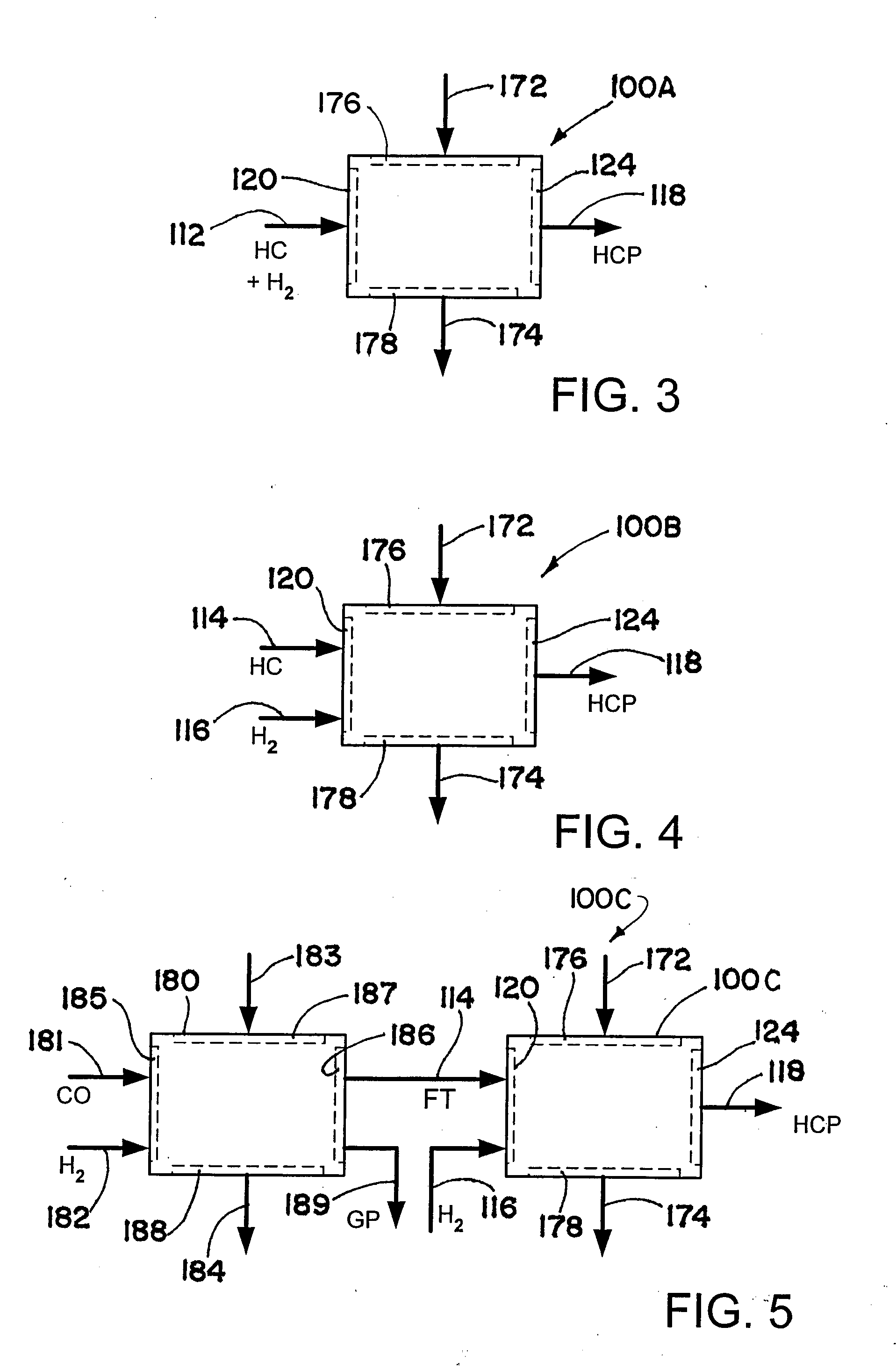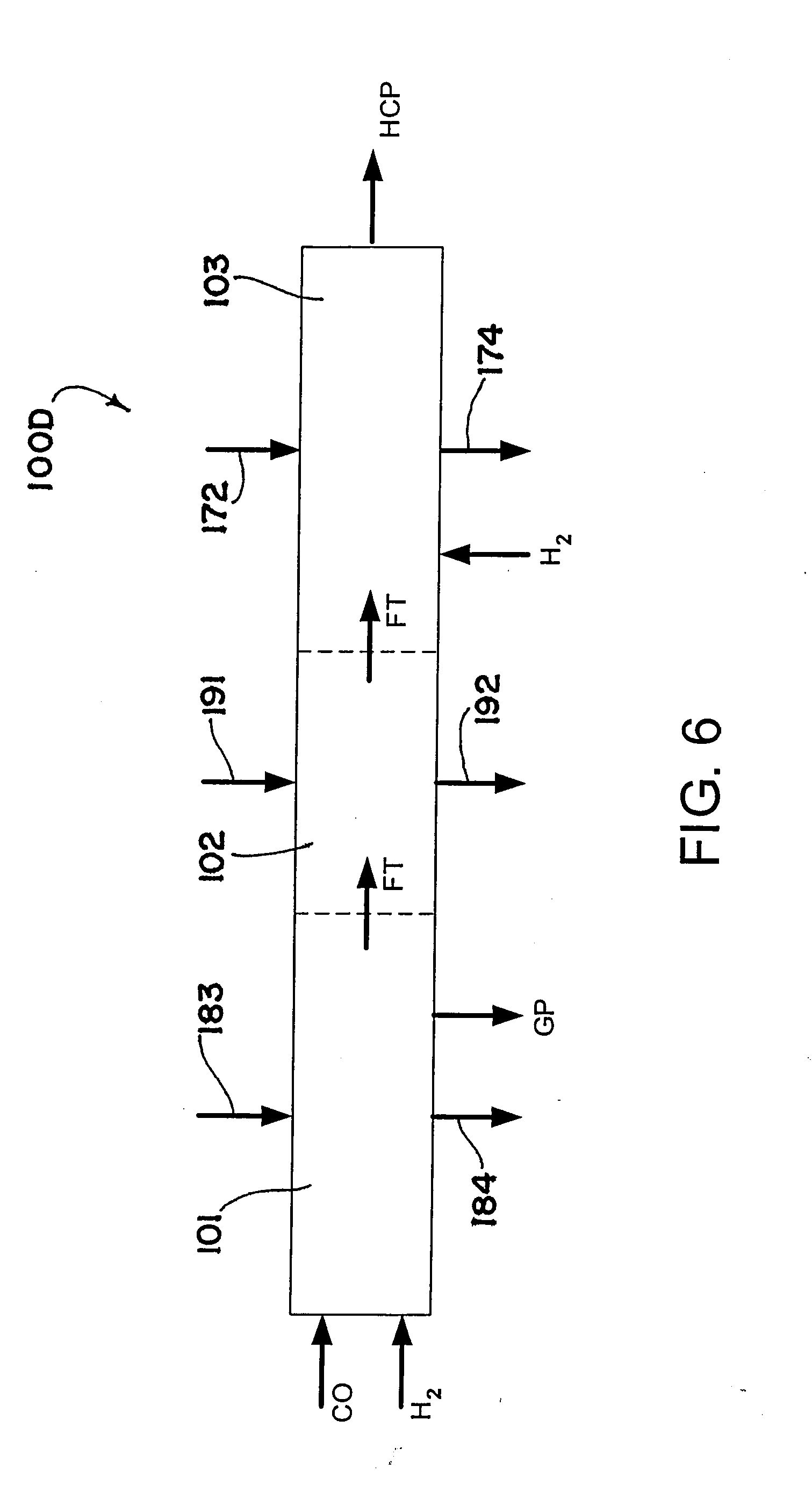Process and apparatus employing microchannel process technology
a microchannel and process technology, applied in the direction of physical/chemical process catalysts, gas-gas reaction processes, metal/metal-oxide/metal-hydroxide catalysts, etc., can solve the problems of insufficient contact with the catalyst, inefficient temperature control, hot spots and coking formation, etc., to reduce coking, precise temperature control, and high reaction rate
- Summary
- Abstract
- Description
- Claims
- Application Information
AI Technical Summary
Benefits of technology
Problems solved by technology
Method used
Image
Examples
example 1
[0316]A test device is used to conduct the inventive process. A schematic of the test device is shown in FIG. 28. The test device is a tube-in-tube type reactor assembly consisting of an inner tube with an ⅛ inch (0.32 cm) outer diameter and a outer tube with an ¼ inch (0.64 cm) outer diameter. The inner 0.125 inch tube contains the catalyst and inner diameter of the tube was 0.069 inch. A thermostatic fluid, that could be either liquid or vapor, is allowed to flow in the annulus formed between the outer wall of the 0.125 inch tube and the inner wall of the 0.25 inch tube. The reactants flow in the inner tube and contact the catalyst to form product. The coolant may flow cocurrently or countercurrently with respect to the flow of the reactants and product but in the example given here the thermostatic fluid and reactants flow co-currently.
[0317]The particle packing is retained in the device by porous metal frits located both upstream and downstream of the catalyst bed (sintered stai...
example 2
[0396]A Fischer-Tropsch catalyst with a median particle size of 260 microns and a total cobalt loading of 50 wt % is used in a microchannel reactor. The individual microchannels have a nominal dimension of 0.125 by 0.0375 by 7.375 inches (3.175 mm×0.95 mm×18.73 cm). The reactor has a total of 272 process microchannels deployed on in two layers. Each of the of the individual microchannels is targeted to be filled with catalyst to a level of 6.66 inches (16.92 cm), the balance of the channel length on the inlet side being filled with silicon carbide. The bed density (Packed apparent bed density or PABD) is 1.07 g / ml as loaded in the microchannels as compared to 1.08g / ml determined for the catalyst material externally (see Table 13). The reactor is brought on line and operated with an inlet pressure of 350 psig (24.1 bars) and a coolant temperature averaging 210° C. Feed gas consists of hydrogen, carbon monoxide and nitrogen. The hydrogen to CO molar ratio is 2:1 and the feed contains ...
PUM
| Property | Measurement | Unit |
|---|---|---|
| pressure | aaaaa | aaaaa |
| temperature | aaaaa | aaaaa |
| superficial velocity | aaaaa | aaaaa |
Abstract
Description
Claims
Application Information
 Login to View More
Login to View More - R&D
- Intellectual Property
- Life Sciences
- Materials
- Tech Scout
- Unparalleled Data Quality
- Higher Quality Content
- 60% Fewer Hallucinations
Browse by: Latest US Patents, China's latest patents, Technical Efficacy Thesaurus, Application Domain, Technology Topic, Popular Technical Reports.
© 2025 PatSnap. All rights reserved.Legal|Privacy policy|Modern Slavery Act Transparency Statement|Sitemap|About US| Contact US: help@patsnap.com



